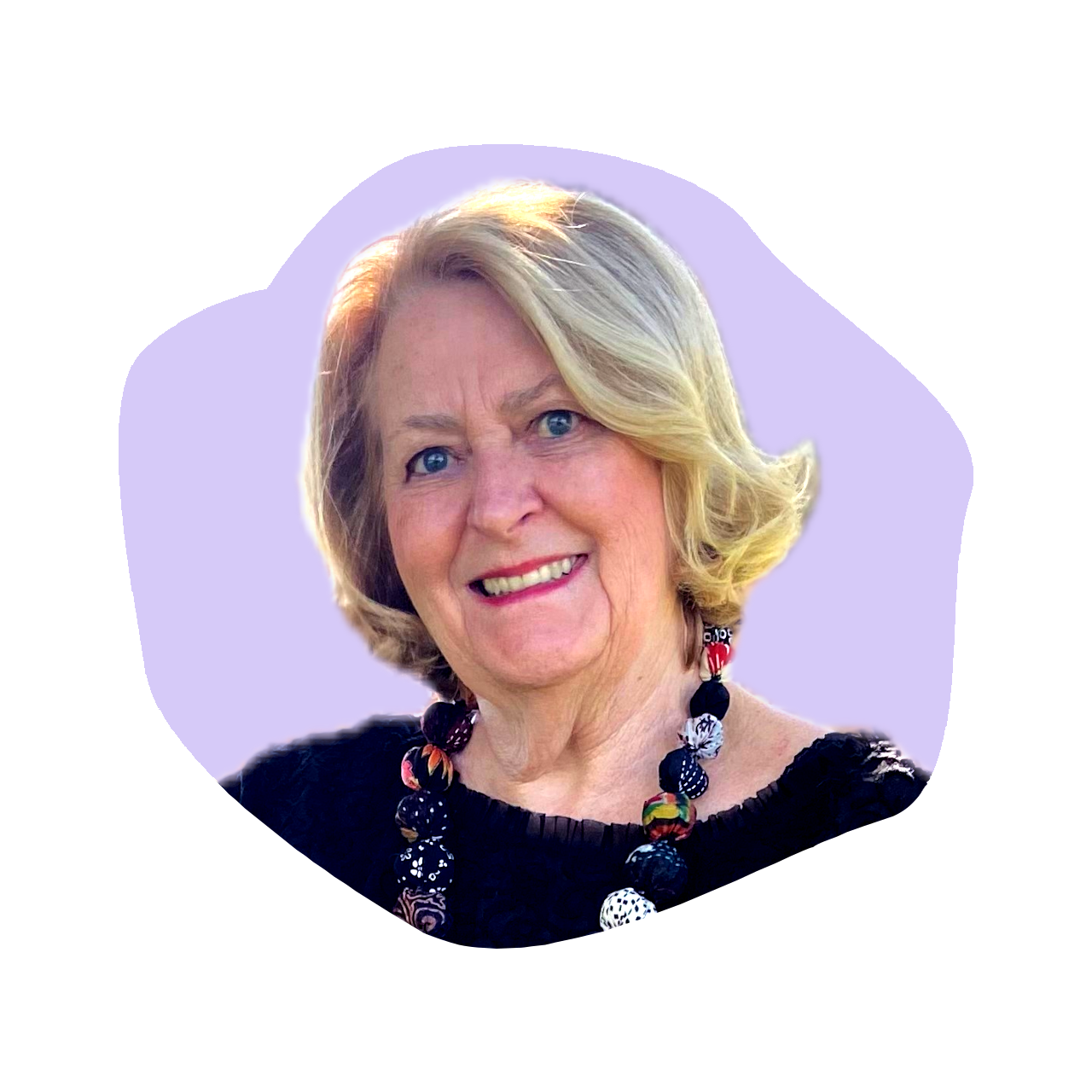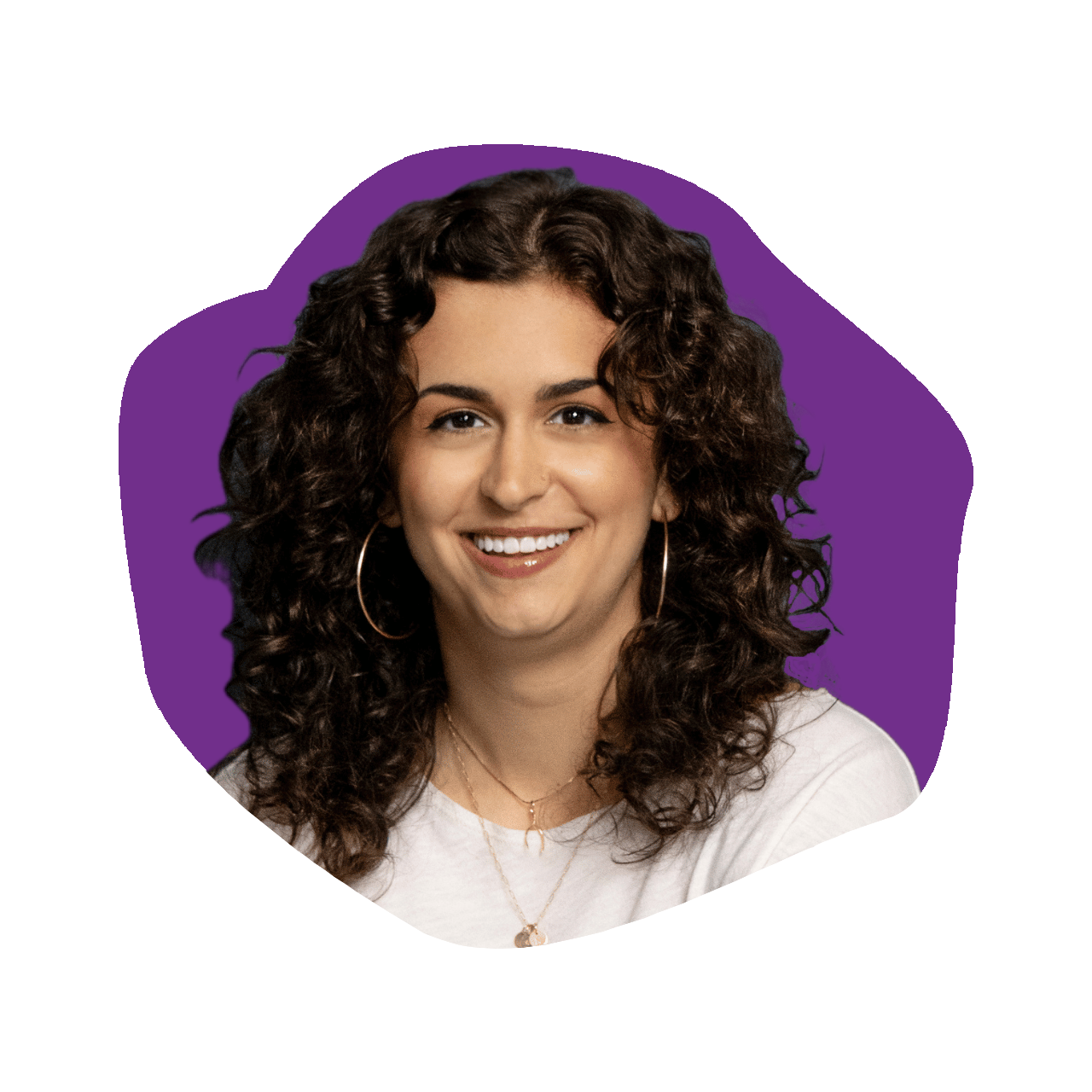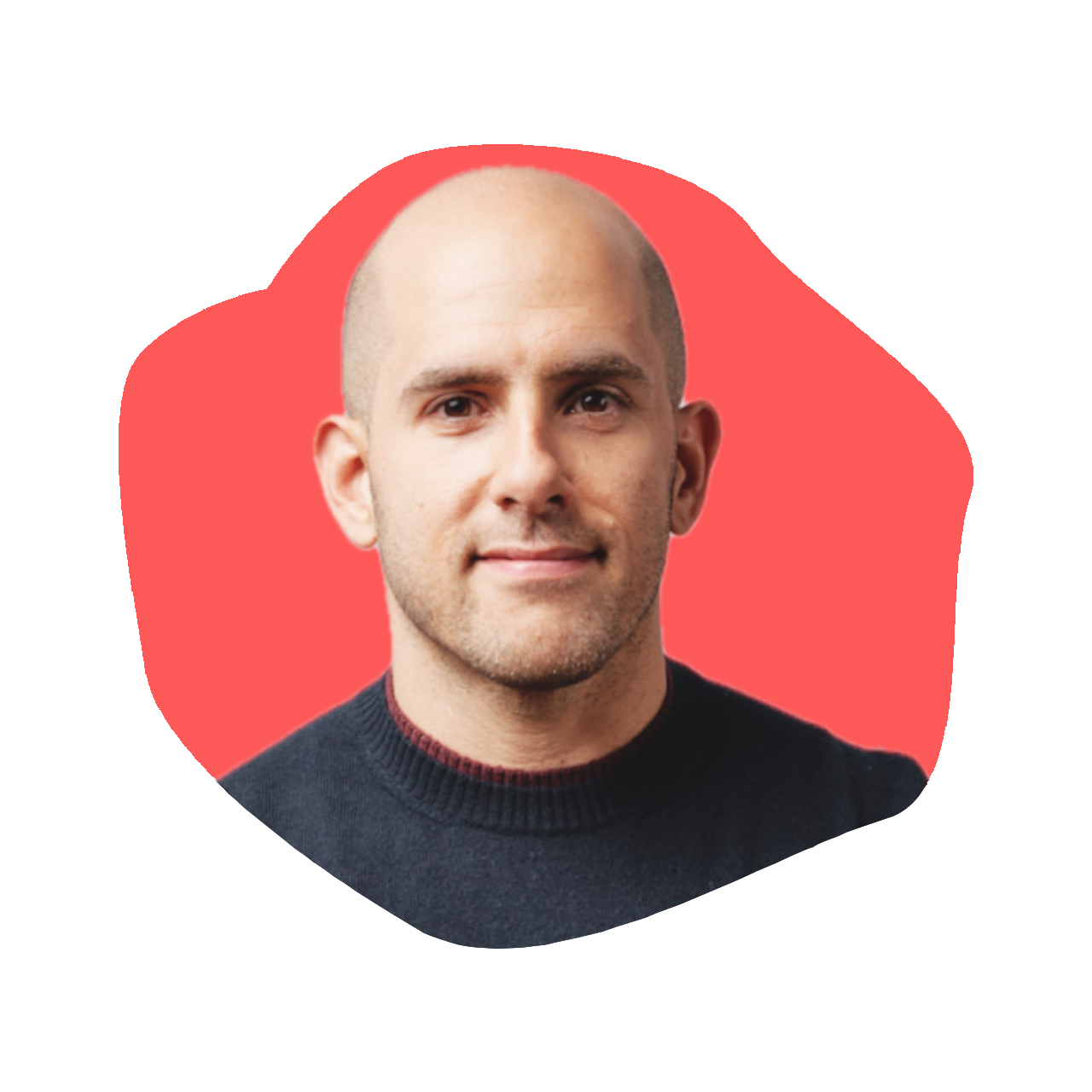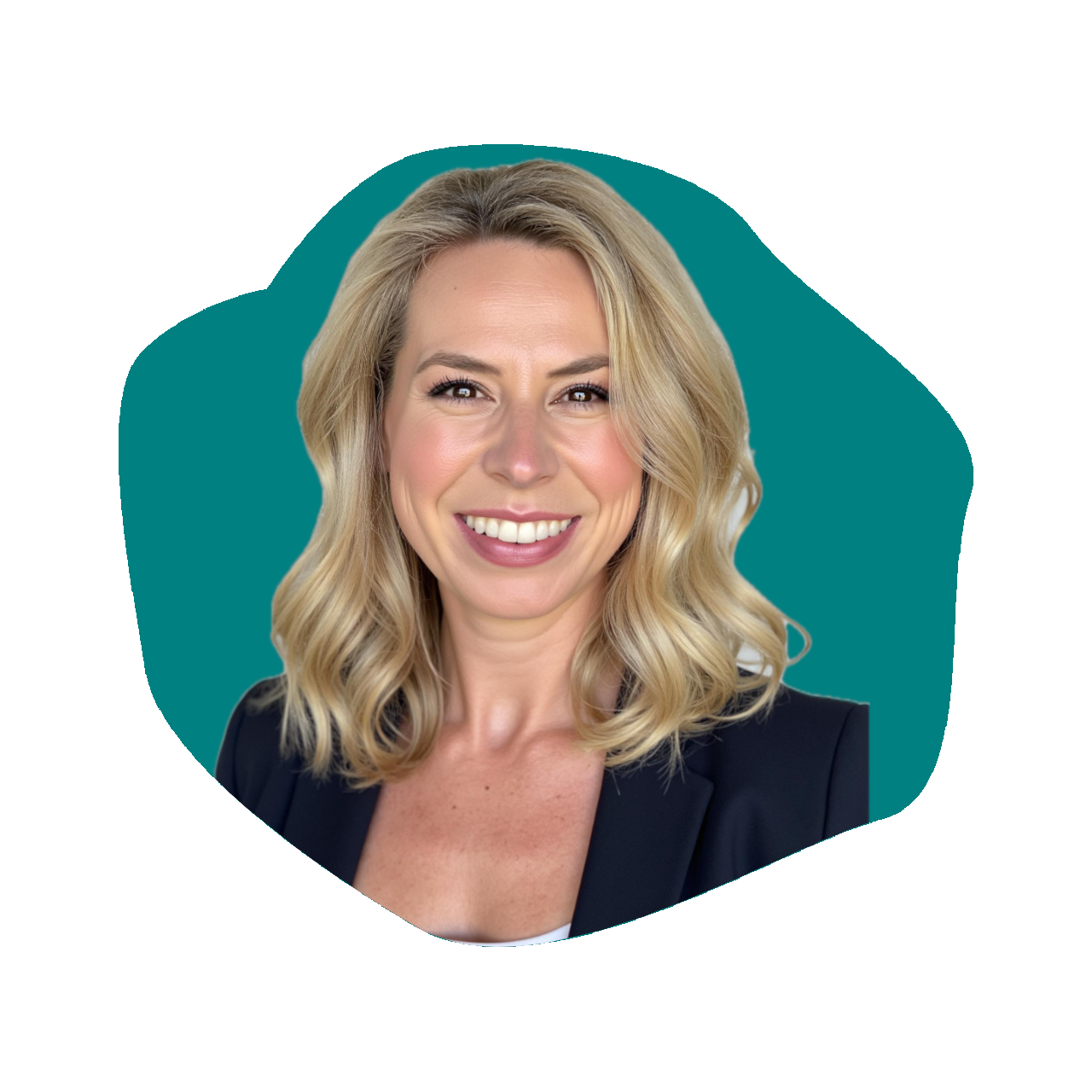Martha Barra: Owner of Barra of Mendocino
Episode 721

On this episode of The Kara Goldin Show, we’re joined by Martha Barra, Owner of Barra of Mendocino and Redwood Valley Cellars—a pioneer in organic winemaking with a story that spans decades of grit, growth, and unwavering values. Alongside her late husband, Charlie Barra, Martha helped turn a single vineyard into a thriving, vertically integrated wine business with more than 350 acres of certified organic grapes, two acclaimed wine brands (BARRA of Mendocino and Girasole Vineyards), and a 2.8 million gallon custom crush facility serving wineries across Northern California.
In our conversation, Martha shares what it’s really taken to lead in a legacy industry, the early decision to farm organically before it was popular—or even profitable—and how she’s weathered market shifts, changing consumer expectations, and personal loss to keep the business thriving. We dive into the value of patience, the hard truths about the organic wine market, and how Martha continues to innovate while staying rooted in tradition. If you’ve ever wondered what resilience, vision, and leadership look like over the long haul—this one’s for you.
Whether you’re in the food and beverage world, building a family-run business, or just love hearing from leaders who’ve done the work for decades—this episode is full of timeless insight and inspiration. Now on The Kara Goldin Show.
Resources from
this episode:
Enjoying this episode of #TheKaraGoldinShow? Let Kara know by clicking on the links below and sending her a quick shout-out on social!
Follow Kara on LinkedIn – Instagram – X – Facebook – TikTok – YouTube – Threads
Have a question for Kara about one of our episodes? Reach out to Kara directly at [email protected]
To learn more about Martha Barra and Barra of Mendocino:
https://www.instagram.com/barraofmendocino
https://www.instagram.com/girasolevineyards
https://www.facebook.com/BarraofMendocinoWines
https://www.facebook.com/GirasoleVineyards
https://www.redwoodvalleycellars.com/
https://www.barraofmendocino.com/
Transcript
Kara Goldin 0:00
I am unwilling to give up, that I will start over from scratch as many times as it takes to get where I want to be. I want to be you. Just want to make sure you will get knocked down. But just make sure you don’t get knocked out, knocked out. So your only choice should be go focus on what you can control. Control, control. Hi everyone, and welcome to the Kara Goldin show. Join me each week for inspiring conversations with some of the world’s greatest leaders. We’ll talk with founders, entrepreneurs, CEOs and really, some of the most interesting people of our time. Can’t wait to get started. Let’s go. Let’s go. Hi everyone, and welcome back to the Kara Goldin show. I am super excited for my next guest today. She is someone whose story will absolutely inspire you. Anyone navigating legacy reinvention or the long road of building something super real and awesome. I’m joined by Martha Barra, who is the owner of Barra of Mendocino, and also JIRA sola wines. You may know about those incredible, incredible wines. They’re some of the most tenacious leaders in the California wine industry, up in Mendocino and Martha has spent over four decades helping grow one of the earliest organic vineyards in the US before organic was even a conversation alongside Her late husband, Charlie, a pioneer and sustainable grape growing, she transformed what started as a quiet family operation into a powerhouse business and 350 beautiful acres of certified organic vineyards up in Mendocino, two successful Wine brands and a massive custom crush facility serving wineries across the region that is known as Redwood Valley cellars. But this isn’t just a story about grapes and wine and good wine. It’s about staying the course through change, standing by your values when it’s easier, maybe more convenient not to and building a business that reflects who you are. So I cannot wait to jump in to this conversation with Martha. And without further ado, welcome Martha. How are you?
Martha Barra 2:34
I’m just fine. Thank you, Kara, that that’s
Kara Goldin 2:38
awesome, awesome. Well, thank you for coming on today. Really, really appreciate it. So let’s start with the brand. Actually, the two brands, if you can talk a bit about Bara and also
Martha Barra 2:53
Girasole Mira sole, might as well be Italian this morning,
Kara Goldin 2:58
you say it much but much better. You’ve had more practice with it. What makes both of your brands stand out in this incredible world of wine?
Martha Barra 3:10
And there is, as you mentioned, Kara, there is a lot of wine out there. We’re distinguished in the marketplace by we’re not big. We’re only about 20,000 cases, but we are certified organic. That is one of the things that makes us distinct. There aren’t very many wine labels that have certification on the on the label. And to be certified, you have to be not only farming certified organic in the vineyard, but you have to be certified at the wine level too, because making wine under National Organic Program standards is very different. Our recent winemaker told this when he started making wine for us, that he felt it was like making wine with one hand tied behind his back. Wow, it’s there’s a lot of things that you cannot add to it. So both brands are carried the California certified organic farmer certification and that that does, as I say, that’s one of the best distinctions. We are all a state, family owned. We have a story a long history, not in not only in just Mendocino County, but in the California North Coast too. And we’re in 2028, States and Japan. Well, we were in Canada, but, um, that order got canceled, and I totally understand why.
Kara Goldin 4:54
Crazy, crazy. So you started way at 40. Five years ago was when you first started. I married Charlie. When you married Charlie, so can you give us the backstory, the family backstory of of the vineyard?
Martha Barra 5:11
Well, Charlie’s family came. They were Italian. Came from northern Italy, around a town called curio, which is northern Italy, but just up north of the French river era. So his mother was actually born in France. So they were always they were always farmers. So Charlie was brought up in in the vineyard, and in high school, he actually went to school half a day. Leased a vineyard from one of his neighbors, and when all was said and done that year, he made three times as much as the principal. Charlie never went on to college. He jumped right in and started farming. He did spend time in the Korean War, luckily, at the procedure of San Francisco, when he came out of out of this service, he had some money in his pocket, and that’s when our our vineyards were purchased, much of it, 150 acres at that time, the home Ranch is now 275 we’ve just kept adding parcels of neighbors that came up for sale. So and then have bought another 50 acres surrounding the custom crush facility, River Valley cellars, and then one high on the mountain that has petite Sira and Zinfandel in it, on it, planted on it. Wow. And so that’s that, those are the three estates.
Kara Goldin 6:53
That’s incredible. So you’ve been farming organically long before it became popular. Can for the neophytes of organic wine. Can you share how that what does that mean? Exactly? Well,
Martha Barra 7:09
and then if you look at food, food production is much the same. You don’t have you don’t use anything that has C, i, d, e, that’s chemicals. We don’t use any kind of chemicals. We are we are above sustainable. When my husband, Charlie, would never become biodynamic. He would never fill that cow horn with manure and bury it and then make tea. You just, you just couldn’t talk him into that. He would call that voodoo, but he understood the organic production of planting cover crops, not using commercial fertilizer. You get your nutrients of building the soil and so you know, you’re protecting soil, water, air quality of of working conditions, particularly for our employees. So there’s a lot of that, then it’s a commitment. So we’ve been certified since 1988 Wow, Yes, grandfather and father farmed, and they said they never use chemicals. And so he would say, why should i? So, you know, we have other for example, leaf hoppers is one of our biggest pests, pests, and what we use is styled oil, which is kind of a mineral oil, or we can use pyganic with just chrysanthemum oil. So these are what I call soft chemicals. They’re naturally produced so very, very different than what standard agriculture uses.
Kara Goldin 8:53
So interesting. So did you ever think, obviously, you know you you met Charlie, I would imagine, did you live in the area and you met? And that’s that’s amazing for that story. Kara, I’m asking for that story. How did you end up? People tell
Martha Barra 9:11
you that we met in church. That’s not true. We both of our children. I had two children, and he had one in St Mary’s School, which is a Catholic school. So we, I was on the school board with Charlie, and there were fundraisers, and we would work together on that. And then there is, he was on the county planning commission, and I was on the City Planning Commission. And here again, there were joint meetings. It was this person. So, you know, you just recognize there’s a there’s a bond there. So that’s I was always in the legal field and but when I married Charlie, then I jumped right in.
Kara Goldin 9:54
That’s amazing. So you so I love hearing the story of a. Of people who, I mean, there’s multiple stories there, but you didn’t know you were going to get into the wine industry, not you know, and and you didn’t go into the wine industry right out of school, any school, right? You had a whole other career. How challenging was it for you to really understand this industry and all of the ins and outs. I mean, I think it’s almost when you grow up doing something, there’s just so many things that you get up every morning and make sure are getting done that are critical and important. I would imagine that, you know, jumping in a little bit later on in life, was challenge. Was interesting, but challenging.
Martha Barra 10:44
Well, it was, but my skills of my previous work experience came in very handy here, and I learned Kara very early on that I didn’t give Charlie any kind of advice on how you farm, and he and then he didn’t get into my compliance finance contracts. You know, I had it. I had different skills that I brought to the table. So may we complimented each other. I love that our diverse skill sets. So
Kara Goldin 11:21
how did once you came in, and it sounds like you were putting some processes in place, is that fair to say, and, and what was the what was the main, I guess, what did it look like then versus what it looks like today. Has there? Was there innovation? What else did you start that maybe you didn’t have when you first got involved?
Martha Barra 11:49
Well, we didn’t have the custom crush when we first when we were just farmers. That was a kind of a piece of cake, because we didn’t have brands. We didn’t have brands, and we didn’t have the custom crush. So we could actually, my son was going to Cal Poly at that time, and we would take off and go to Europe for two and a half months, and Charlie would be on the phone to my son, and he would pretty much run the vineyards. And that was pretty simple. But then, you know, we bought the custom crush facility and and in a big tasting room, 5000 square feet, it’s beautiful. Wow, it is. And so then, well, we, and we bought that with a partner. Well, he had brands, and so pretty soon, it’s evident that we will follow along that line. And so that was created, you know, just another, another entity. So, you know, started out with farming, and then go to brands, the actually the custom parts first and and then the brands. So now we’ve got three, three separate projects going here. It’s so much to build. I bet,
Kara Goldin 13:08
what is the biggest part of your business then
Martha Barra 13:12
money was money wise, right now, the custom crush is interesting because it’s when you know we’ve been not selling grapes, but making bulk wine that other wineries would buy. Well, now there’s a lot of bulk wine coming in from other countries that’s giving us competition. But also, too, there’s just a downturn in a total worldwide wine market. So and alcohol in in general, because there is a movement may have very strong in Europe and in Canada, that all alcohol is not good for you. So I’m sure you’ve heard this,
Kara Goldin 13:56
yes, yes. So what are your feelings on that? I mean, has it? I know I’ve heard of non alcoholic wines, and there’s a few out there, right?
Martha Barra 14:07
I haven’t explored them. And even there’s non alcoholic gin, so no, there’s and there’s something for everyone. So I think we will stay the course and not follow what may be the trend today, but I just, I know that there’s a lot of grapes coming out in California, but I, as I say, I think we are able to stay the course and to make really, really good wine and be in that niche of of the organic sector and and it will all, it will all balance out. That’s my opinion.
Kara Goldin 14:48
So can you explain to people the difference between the two wine brands, Bara as well as JIRA sola? And just you started to explain it, but I’d love to. Here a little bit more, and maybe name all the different brands under underneath them and how they’re really the other
Martha Barra 15:06
varietals. Uh huh. So we make Chardonnay Pinot Blanc, which is unusual. There’s only 438 acres grown in California. So we make Pinot Blanc, and we happen to have eight acres. The other white is mustaq Canelli, and very small production of that. Our main varietals are Cabernet, Pinot, Zinfandel, Sangiovese. So any and we do a Charlie’s blend, which is a blend, and that blend changes every year. This year, it was strong on Cabernet and with a bit of Merlot and some Petite Syrah. So it’s a beautiful blend that’s so delicious. So the main difference between those two brands is Bara gets all the new French oak, and as I say, we buy about 30% new French oak a year. And then the jurassoli is we add staves hanging down in the tank, just a kiss of oak, but it’s enough to give it complexity.
Kara Goldin 16:13
What are staves? Sorry, I’m not familiar with that. Oh, oak.
Martha Barra 16:18
Or you can buy blocks. It’s amazing the oak and there it’s called Oak adjuncts, oak additives. So some of the some are squares that are in bags, and you put them in into the tank, and it just gives it an and they’ve gotten so good that you can choose what you what the flavors are that you want to enhance the wine with. And it’s just, as I say, an alternative to and many, many wineries are, are doing that these days. It just costs a lot less
Kara Goldin 16:55
a good oak, a good oak barrel from France Francois, is what we use a lot of is like $1,300 for 59 gallons, wow, yeah, so interesting. Yeah, yeah. Super, super interesting. So is, do you have one wine that is kind of the runaway bestseller? I guess of of all of your wines, we
Martha Barra 17:19
excel. We really if you look at our sales records, it is piano. We grow right up against the foothills in Mendocino County. And even though it’s hot in September during the day, when you know when the fruit is ripening, the nights are sometimes 50 degrees difference. There’s a diurnal shift between day and nighttime temperatures, and so we can ripen fruit, but have longer hang time and nice natural acidity.
Kara Goldin 17:54
So growing the grapes. How long does that process take?
Martha Barra 17:58
Well, I will take you through that, because we just replanted 15 acres of a new Pinot Noir clone, 667, so it we pull it out, and I will tell you about making biochar in a minute. I won’t get sidetracked, but that’s what we did with the old lines. So I have to tell you about that. Yeah, I’d love to hear that planning it takes about you plant. We buy the stock from the nursery, and we use St George root stock grafted at the nursery to the clone that we asked for. So those then it takes about a year to do that. You order it a year ahead of time plant it. And then there’s, it takes three years before you get a decent crop.
Kara Goldin 18:50
And then when you actually do harvest, and do all of all of that, what? How long does that process take to the point where somebody can actually consume a bottle of wine.
Martha Barra 19:04
We’ll pick the grapes and deliver them to the winery and dress them off, and then with with the Bara, it will go into a barrel, and then Pinot Noir will age nine months, Petite Syrah Zinfandel and Cabernet, it’s 18 months. So that’s quite a while to hold wine. But it’s, it’s something that we believe in, and it’s, it seems to pay off for us to have the two choices. And there, there really is a difference. When you taste the two Some people prefer that you’re a sole and it’s just their their flight, their flavor profile
Kara Goldin 19:48
is so interesting. Has climate change impacted how you farm or think about sustainability?
Martha Barra 19:55
Not so far, no one of the things Kara is this. We. Are very fortunate in that we have big ponds, big reservoirs that fill with about 10 inches of rain. So we have plenty of water that does not come out of we do not pull it out of the Russian River. So we’re very sustainable in that regard, in that. And yet, we do have plenty of water. So so far we’ve been able to, you know, our vines look beautiful. So know that we haven’t felt it’s there is there are some challenges. One of them happens to be with labor, and that is, for example, this last week, it’s been very, very warm. And so our guys will go home when it’s 92 degrees, so they don’t get to work a full day. There’s not a thing we can do about it. It’s just too warm. It’s just too warm. Yeah, yeah. It’s so, so interesting. So when you think about the fact that you’re you have a great organic wine. And maybe you see these other wines out there that are not following the same processes as you I guess, from a consumer perspective, how can you spot a great organic wine? Well, you know, I think it comes down to the same concept as with food, is that either you believe that that product, which is certified organic, is better for you, better for not only you, but but the health of the planet, you make that commitment. That’s a choice that a consumer makes, it’s very different than sustainable or regenerative, unless it’s regenerative organic. One of the things, as I will mention again, is that our wines carry the certification on the label. There are many sales people, and I won’t put it back on the farmer, but, but because there is a lot of green washing, yes, we Farm Organic like that. No, we’re not certified. It’s too costly, it’s too time consuming. So there are a dozen excuses why they won’t go ahead and get the certification, but yet they would like to benefit from the move. And there is a real strong movement of buying organic food and buying organic wine. It’s, it’s very much a growing segment of the wine economy. So Europe has a or then they call it organic if the product is grown, either food or grapes are grown, by the organic standards, that’s not true here in the United States, this is one of the things that really confuses a consumer when it comes to wine, is that if we add sulfites, and our wines are, by the way, under 100 parts per million sulfites. Added sulfites under that’s very low, we can only say made with organic grapes. We can’t use the USDA, and that’s really confused. Whereas organic food can use the USDA, and that’s common. And so when you get to the wine, this is the part that really confuses the consumer. Yeah, is that it? Because they will look for the USDA, and there are very few we happen to have fry here in our own community who do not add sulfites so they can use the USDA. But they’re, they’re only about in California, probably about five or six that do not add sulfites.
Kara Goldin 24:07
Wow, that’s that’s so interesting. Yeah,
Martha Barra 24:09
and so now then we’ve gotten into the other very I call it a buzzword, is regenerative. So I farm or regenerative, but unless it’s how, unless you’re farming regenerative, organic, by those standards, it really doesn’t mean that much. And explain that well, because you can still use chemicals. Okay, so there’s a lot, there’s a lot of what I would call nice things you can do. You can how you treat your employees, how you’re building wildlife refuges. You know, there’s lots of other other parts that go into it. Versus what, versus building the soil, or what you’re putting into the soil and the water and the air. So it’s just very, very stringent, what we inspections, that we do, versus other certifications.
Kara Goldin 25:17
So when, when you think back on building the business and the maybe one of those hard decisions that ended up to be a really good decision, but it was a tough decision. You weren’t sure whether or not it was the right thing to do, maybe outside of staying organic and not going with what everybody else is doing and in the industry, what’s one of those decisions that that, you know, was kind of, I don’t know if this is, if we’re going to make it right, or if, if this is the right thing to do, you
Martha Barra 25:55
know, I think we’ve, you Know, farming is, is always an iffy thing, period. So I don’t know that we’ve ever had Billy been faced with that. I’ll tell you what we’ve been faced with right now. And this is we have just taken over another, least, another very large custom crush facility. Oh, you were saying by constellation, ah, it’s the same size we are. So is that the right decision? We don’t know, but we’ve done it, and so we’ll just have to see how the market lays out. So it’s I one of the things Kara is we’re fortunate in that we don’t carry a lot of debt. So, you know, we don’t make, I guess, we just don’t make unwise decisions. We haven’t expanded vineyards as much as we could have. You know, we’re larger than many but but still pretty, on pretty sound footing. So have you
Kara Goldin 27:07
always stayed primarily in the Mendocino region? Have you ever been tempted to go outside, maybe over to Sonoma or Napa or any of the other areas when
Martha Barra 27:20
we bought our partner out in the wine in the custom fresh business, and that was in 2007 we considered very seriously not buying him out, but going having him buy us out, and then going to Sonoma County particularly, and we had owned with partners what is now Francis Ford Coppola. Oh, yeah, at that time it was called souverain. And so we, you know, we were familiar with doing business in Sonoma County, so but we decided that since our farms, all of our vineyards were here, it would be better that we stay focused. So we ended up buying our partner out. And then,
Kara Goldin 28:09
so interesting, you know, keeping the custom crush facility. So what are some of the biggest misconceptions about the about, I guess, wine and wine production that maybe the typical consumer is not aware of, or even the typical new person coming into the industry who is, I’m sure you’ve seen many over the years, and I think you know just
Martha Barra 28:36
It misconceptions
Martha Barra 28:38
about Wine, wine and wine making, I think
Martha Barra 28:43
they think it’s more maybe complex and sophisticated than it really is. If you find something that you really like, and I you know, it’s fine if you put an ice cube in it, that’s your that’s your taste, right? But if you like to drink moscato, that’s fine if you like something a little sweeter. Not everyone appreciates a really fine Cabernet. So it’s, I think, and there’s such an opportunity there. I don’t think there’s any other product that tastes like fruit, different kinds of fruit. And this is, you know, this is what makes wine so much fun, is tasting each varietal, the fit and ones that fit your your palate, and also what you’re eating. So it’s to be shared with family and friends. Is to be shared at picnics, backyard barbecues, on the patio at five o’clock drinking a wonderful rose, which, by the way, we make rose a too. Yeah, and see Pinot and Zinfandel, and it really pops.
Kara Goldin 29:58
Yeah. I. Love it, it’s, it’s so, so good. So when you, I’m sure you’ve been asked by people who are admire you and and you’ve your longevity in the business and the industry as well, but, but really building a brand that has, has meaning, has, you know, stands for something. What would you say is the key thing that that you would share with somebody, maybe somebody who’s who’s thinking about building their own brand? I mean, what’s key, you is it community? Is it, I think it has to, you
Martha Barra 30:45
have to have a passion, yeah, for there the many, many asks. You know, there’s just lots of from compliance, you know, you know, it’s a beautiful part of growing to walk out in the vineyard in the morning, see all the while I’ve seen the pot. I see the ponds full of Canada geese, the fox who, with her kids, live in a in one of our sheds. You know, it’s that the beauty of it is what I think draws people to it, and it’s always exciting. I you know, I can see young people still putting their efforts into being a part of the farming and the wine industry starting brands, you got to be willing to have a tough skin. And if you’re they’re selling it. It’s okay if they tell you, I don’t need it today. I don’t need I don’t need your I’ll, actually, they’ll very kindly say I can’t buy it today. But all that’s saying is they don’t need it. They don’t have a spot on their shelf for you. So I don’t know if I answered that very succinctly, but
Kara Goldin 32:04
no, you know you did. You did. I think it’s, it’s you know more than anything, I think it’s you’re, you’re putting stakes in the ground right around right what your brand means, and even though you’re building the different companies, essentially, and different brands underneath the overall umbrella, I think you still have certain things that are they won’t change. So you’re always going to be organic, right? It’s always going to be
Martha Barra 32:36
family, right? This is one of the things that it’s very much that we have the commitment to, and I’m so fortunate to have is my daughter is director of marketing and sales. My son is production, so he’s the one that runs the custom crush facilities. There are two now. So if, if there’s a story that people appreciate with history and commitment to the principles that we have in staying solid in our commitment to organic production, both at the vineyard and the winery, and then all estate and then all family. So we’re we’re not unwavering in our commitment to what we have built
Kara Goldin 33:30
here. I love it. Well. Martha Barra, thank you so much, owner of Bara wines and gara sola wine, did I sort of get it by the time I’ve said it five times? Yeah, yes, you say it much better. You’ll always say better. So I love it, but terrific, terrific wines. We’ll have all the info in the show notes. If you’re up in Mendocino, definitely check out their beautiful, 5000 square foot tasting room.
Martha Barra 34:03
It’s an architectural wonder. It really is. I love it. Well.
Kara Goldin 34:09
Thank you again, Martha for sharing everything about what you’re doing and really, really incredible business and and really terrific product. So thank you again, and thank you everyone for listening. Thanks again for listening to the Kara Goldin show. If you would please give us a review and feel free to share this podcast with others who would benefit. And of course, feel free to subscribe so you don’t miss a single episode of our podcast. Just a reminder that I can be found on all platforms at Kara Goldin, I would love to hear from you too. So feel free to DM me, and if you want to hear more about my journey, I hope you will have a listen or pick up a copy of my Wall Street Journal, best selling book, undaunted, where I share more about. My journey, including founding and building hint, we are here every Monday, Wednesday and Friday. Thanks for listening, and goodbye for now. You.









